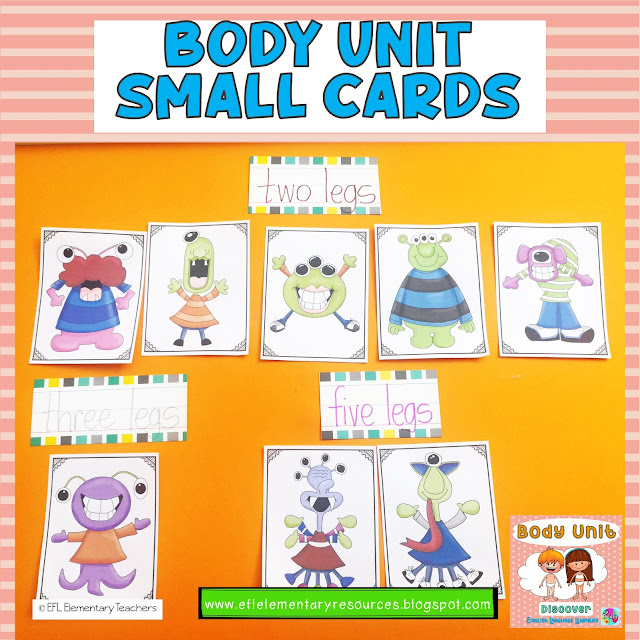This resource is part of Clothes Theme for Elementary ESL or Formadora de Lengua Inglesa. Click here:
https://www.teacherspayteachers.com/Product/Clothes-Theme-for-Elementary-ESL-2987481
Students will identify and sort the clothes flashcards by color.
Review the colors on the board by drawing a color splotch and having the
stduents say the name.
Have the students say what they have sorted: a brown hat!
Point to different clothing item and ask: What color is
the blouse?
Teacher:
What color are the shoes?
Students:
They are pink and yellow.
More vocabulary practice is to make a chart.
Place several people flashcards on the board and make a chart with several
clothing items. Have the stduents come and check which clothes the person is
wearing and write to the ones the person isn’t wearing.
Let’s review prepositions.
Teacher:
Where is the boy?
Stuents:
He’s in the boot.
To talk about possession using have in affirmative or negative.
Teacher:
Who has a pink hat?
Students:
Number 8.
Teacher:
Number 1 has a green hat.
Students:
Number 2 has a brown hat.
Talk about possession in plural and identify
the owner of the hats.
Teacher:
Who has a purple hat?
Stuents:
Number 6 and 12.
Teacher:
Number 10 and 11 have green hats.
Stuents:
Number 8 and 9 have pink hats!
Possessive adjectives His and her. Describing possession. Place two similar flashcards
on the board to contrast what the people are wearing.
Teacher:
This is his T-shirt!
Students:
This is her T-shirt!
More on asking questions about possession: Are these your
boots?
Students:
Yes, they are.
Use the flashcards to help the students express
likes or dislikes. Ask students about their opinion: Do you like
jackets?
Start talking about possessives. Ask questions using the possessive pronouns: Whose shoe is
this?
Students:
The shoe is hers.
To describe what one is wearing using the present continuous tense. Place several flashcards on the board and ask what
they are wearing using descriptive adjectives such as colors.
Students:
She is wearing a black dress.
To describe what people are wearing as the same. Place similar clothing items on the flashcards and have them identify which one it is. Students will answer questions with what.
Teacher:
What are they wearing?
Students:
a green dress!
Play Who am I? or Guess who? I choose several pictures of people all wearing jeans.
Teacher:
I am wearing blue jeans, blue t-shirt and white sneakers.
Relate the clothes to a part of the body.
I
wear gloves on my hands.
I
wear boots on my feet.
I
wear a hat on my head.
Be my follower on Facebook


























































